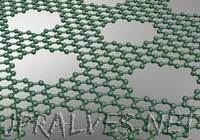
“Gardeners often use sheets of plastic with strategically placed holes to allow their plants to grow but keep weeds from taking root. Scientists from UCLA’s California NanoSystems Institute have found that the same basic approach is an effective way to place molecules in the specific patterns they need within tiny nanoelectronic devices. The technique could be useful in creating sensors that are small enough to record brain signals.”
